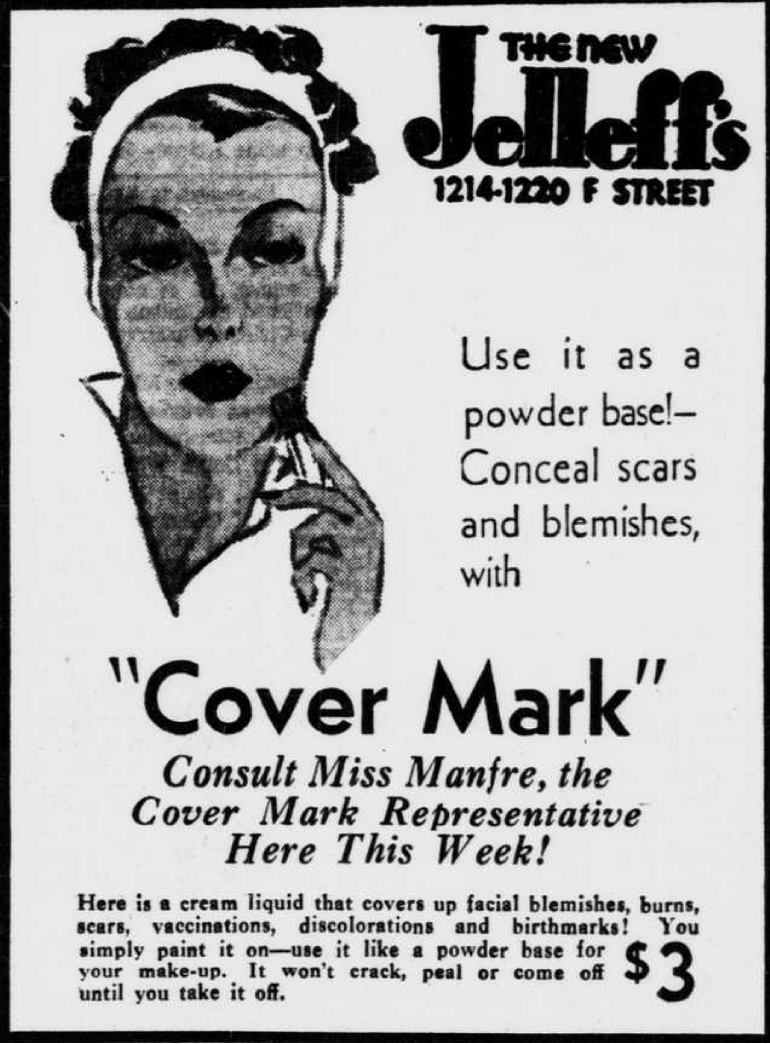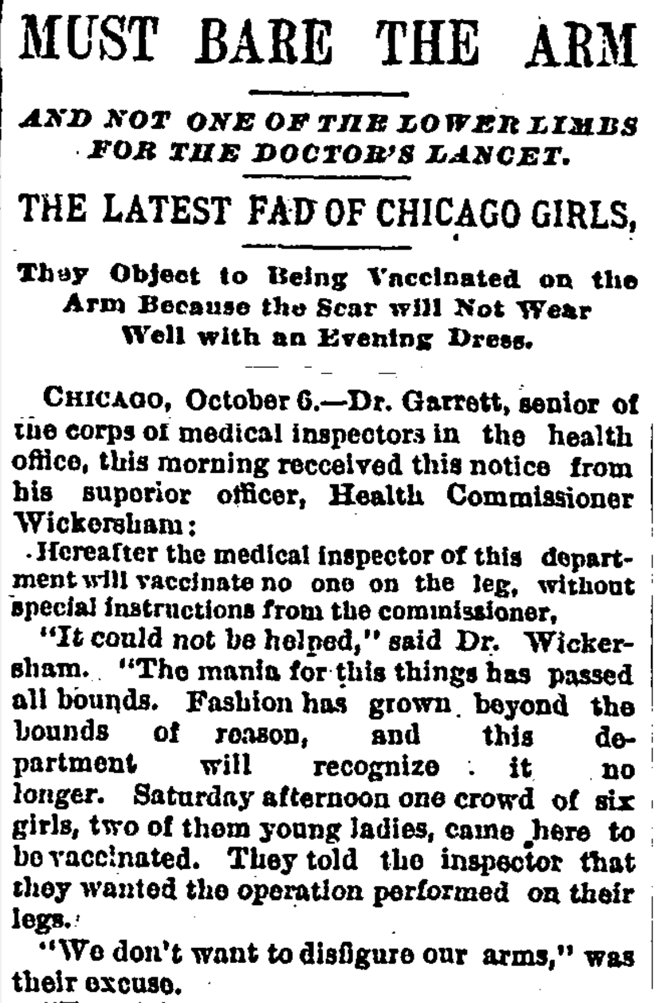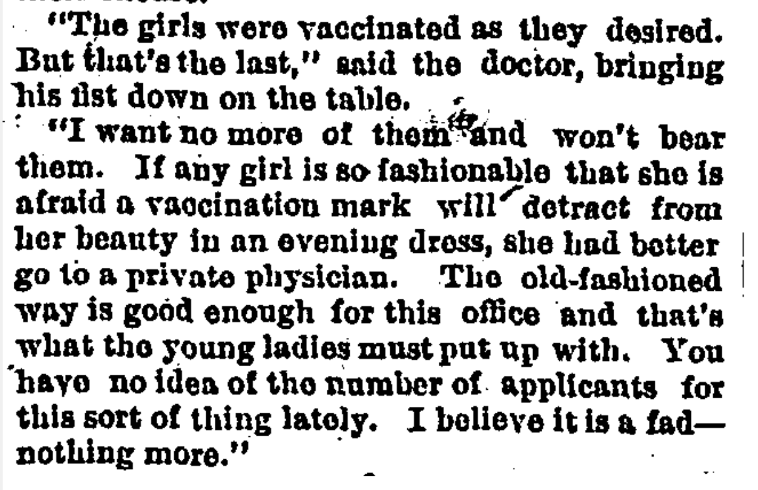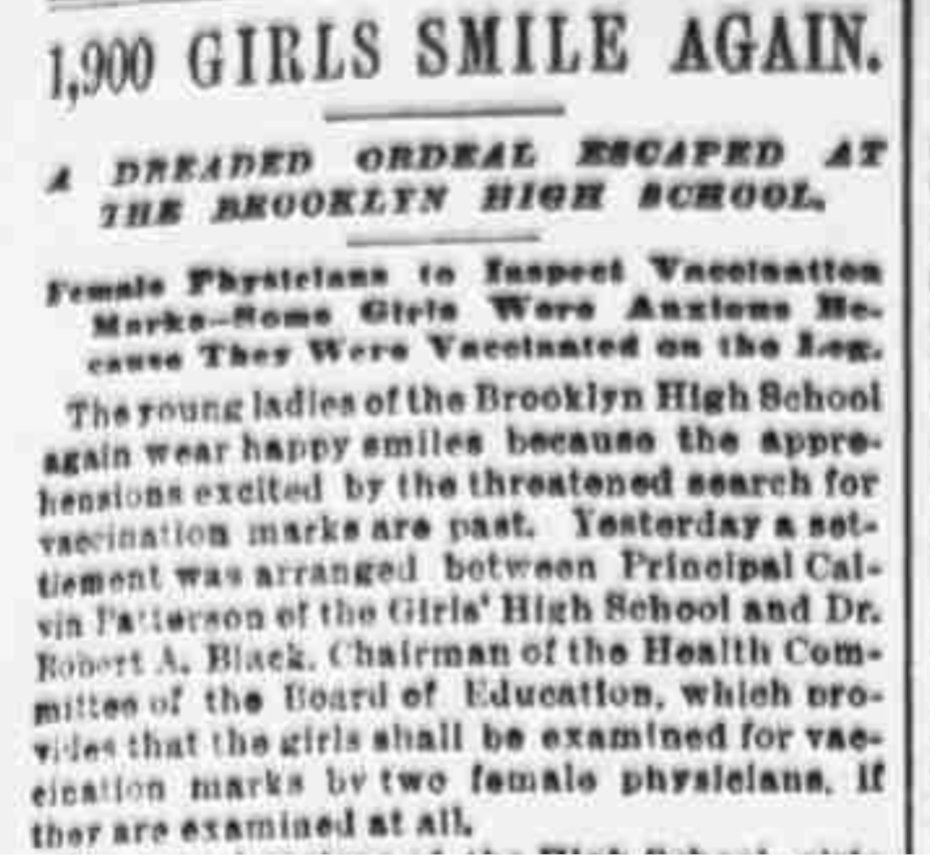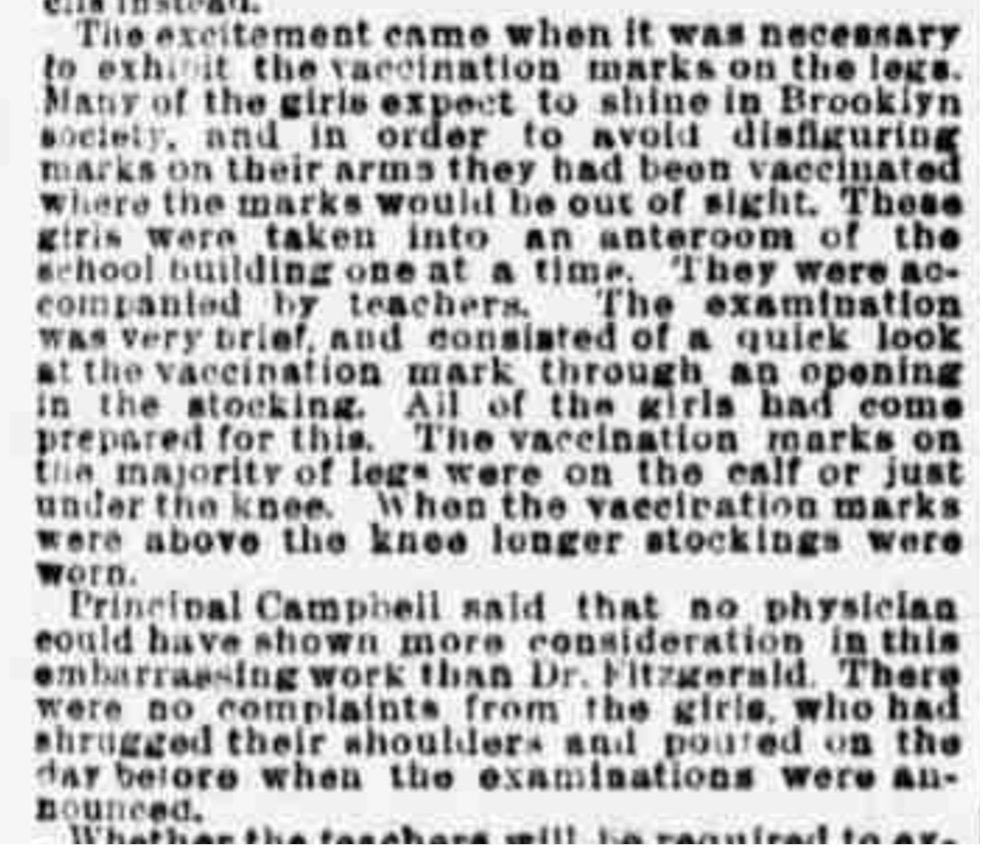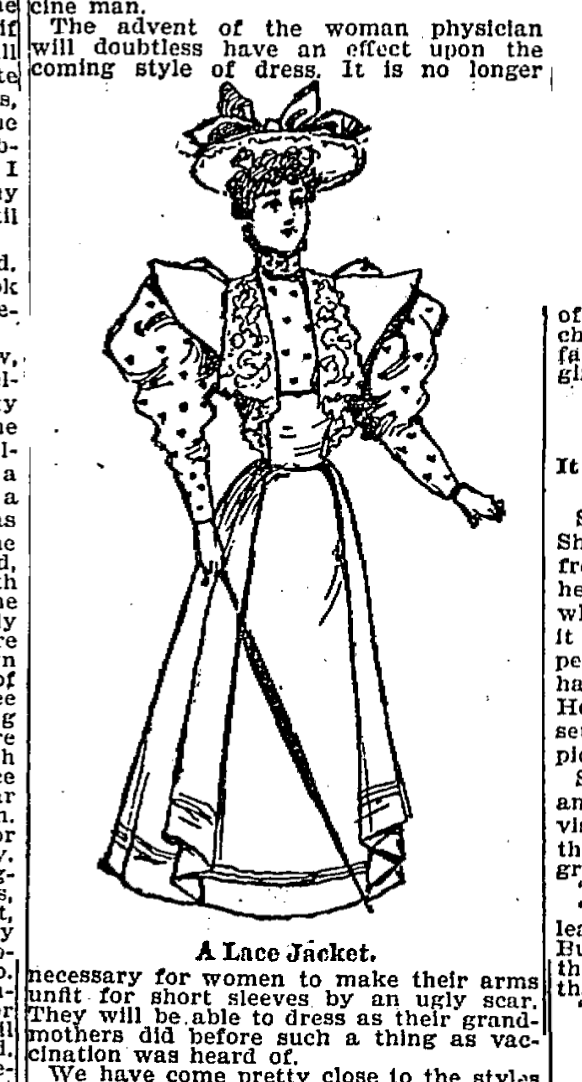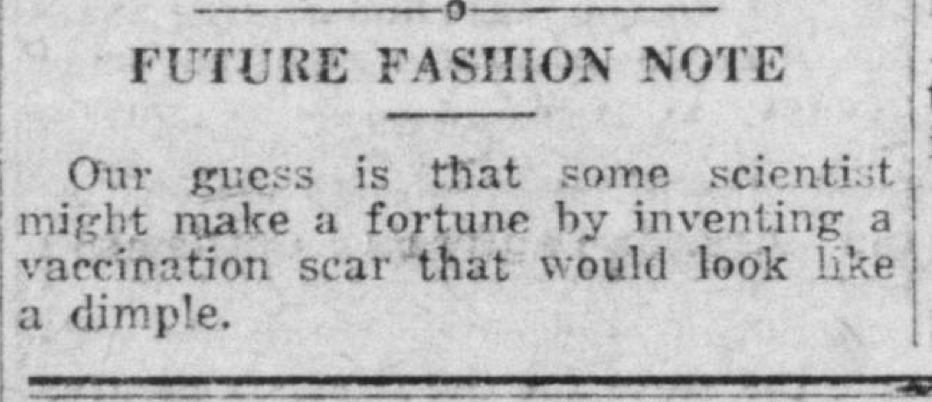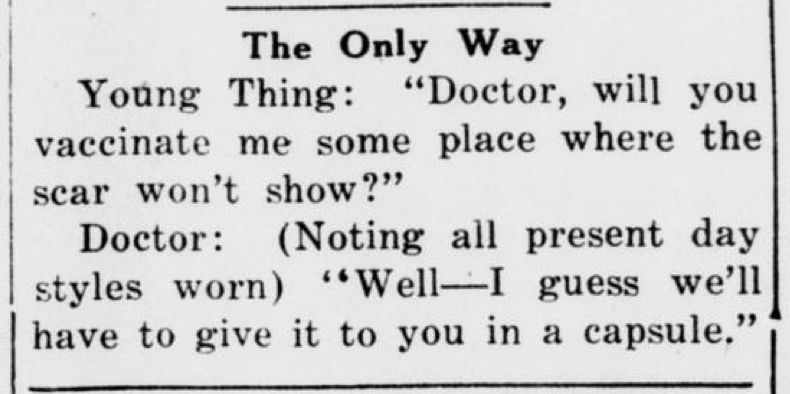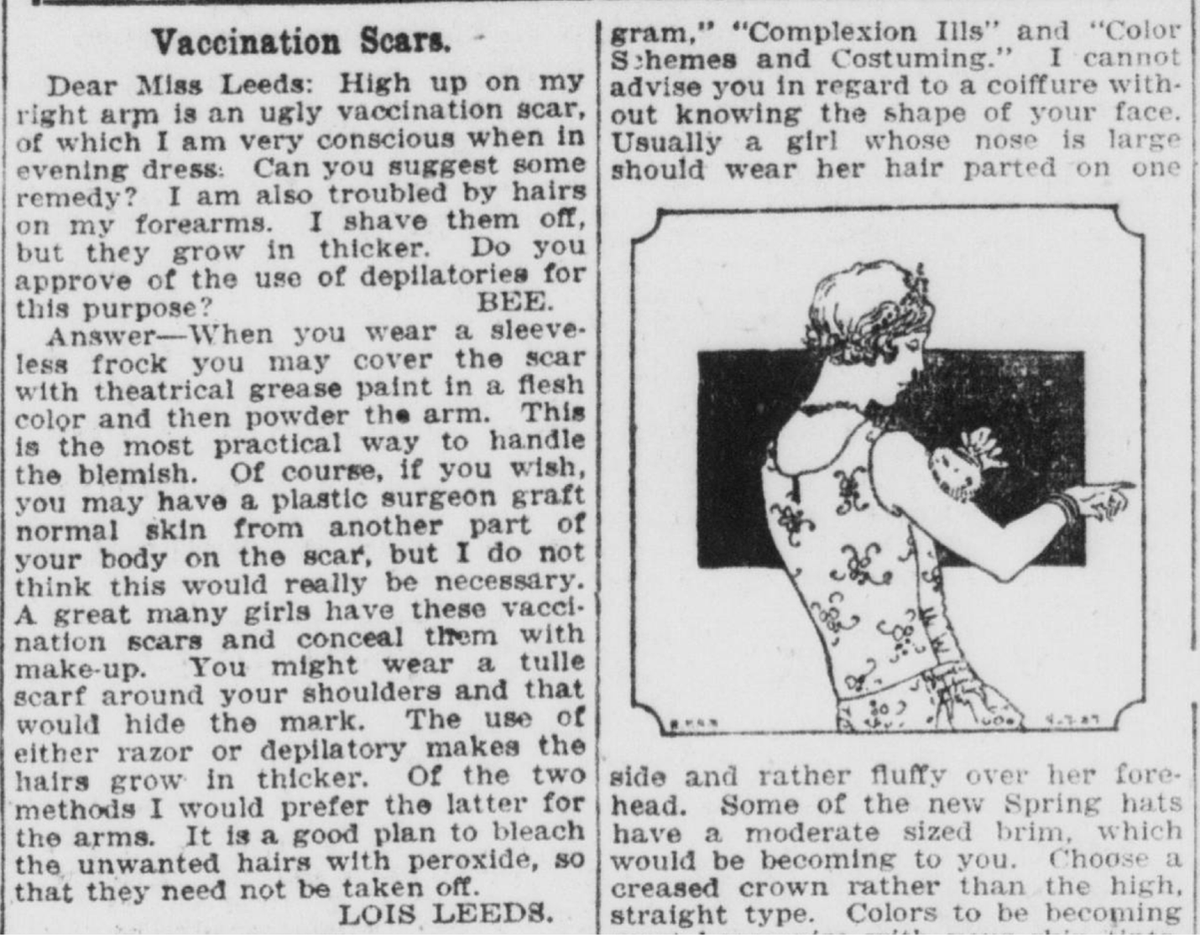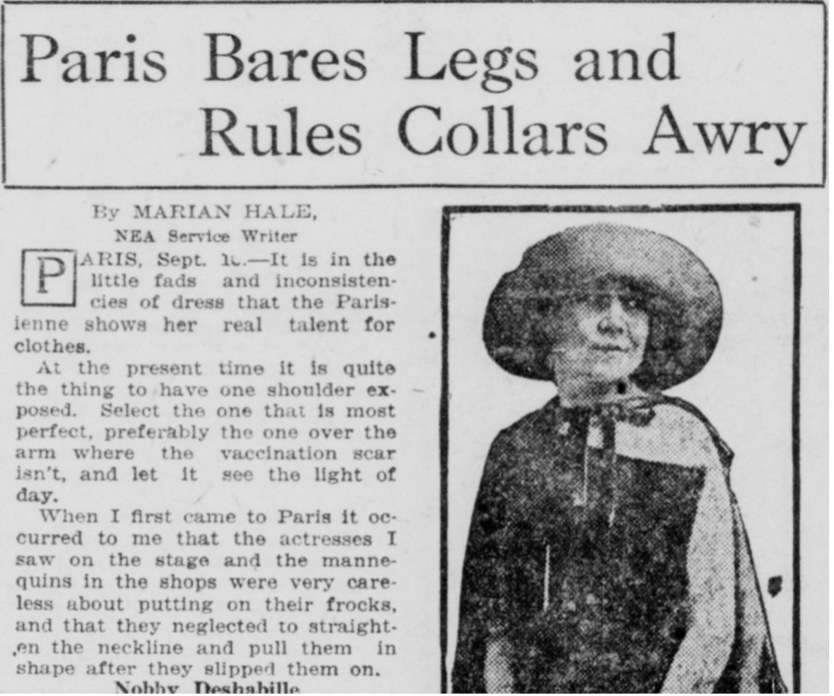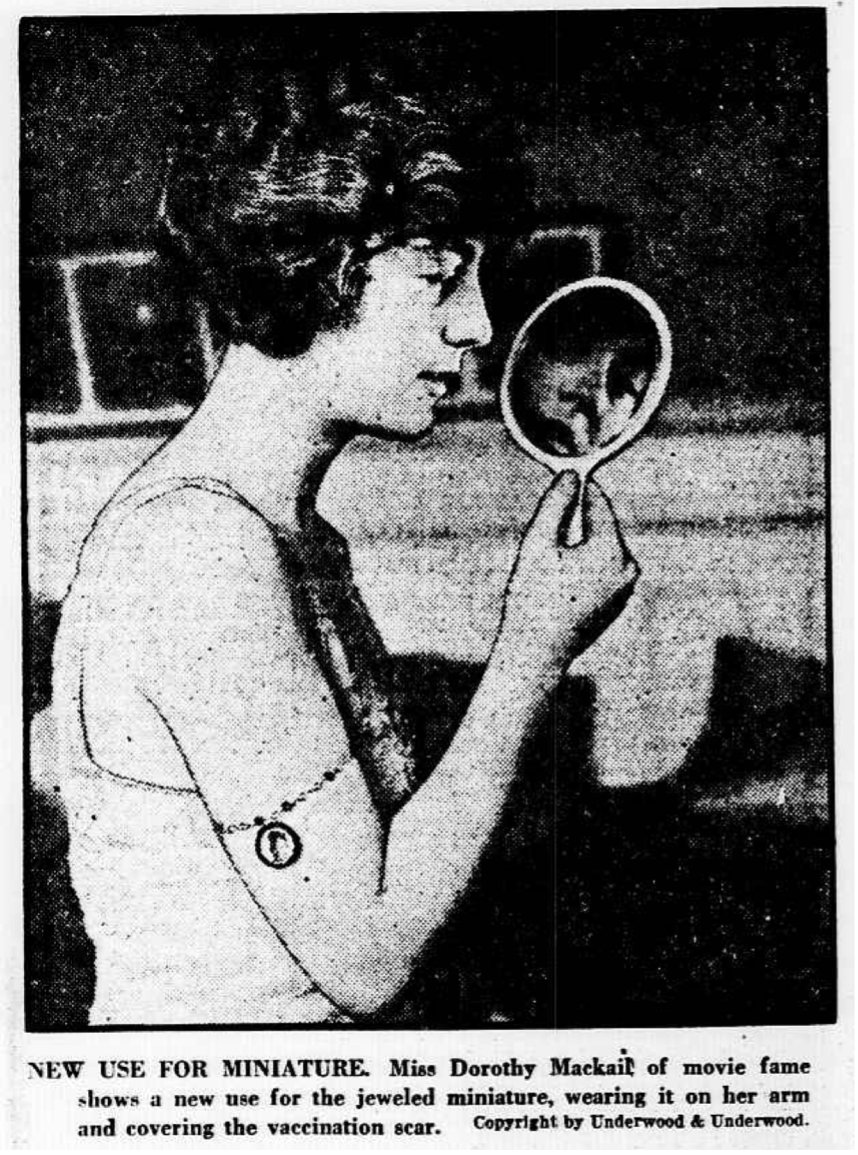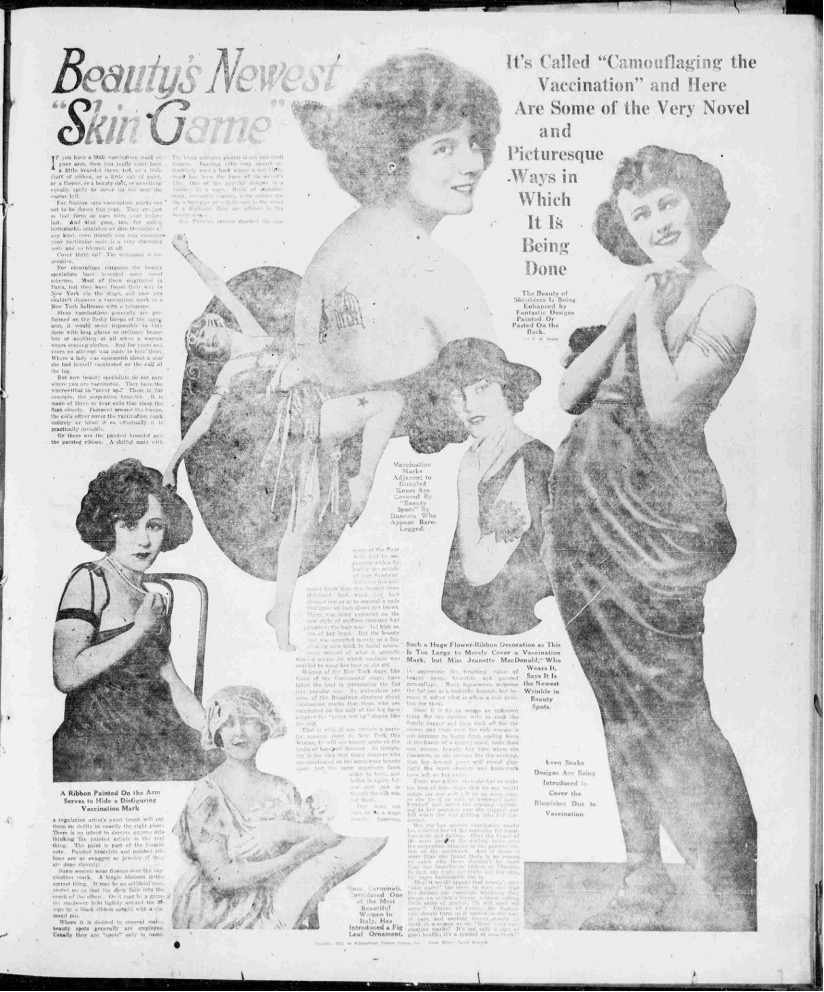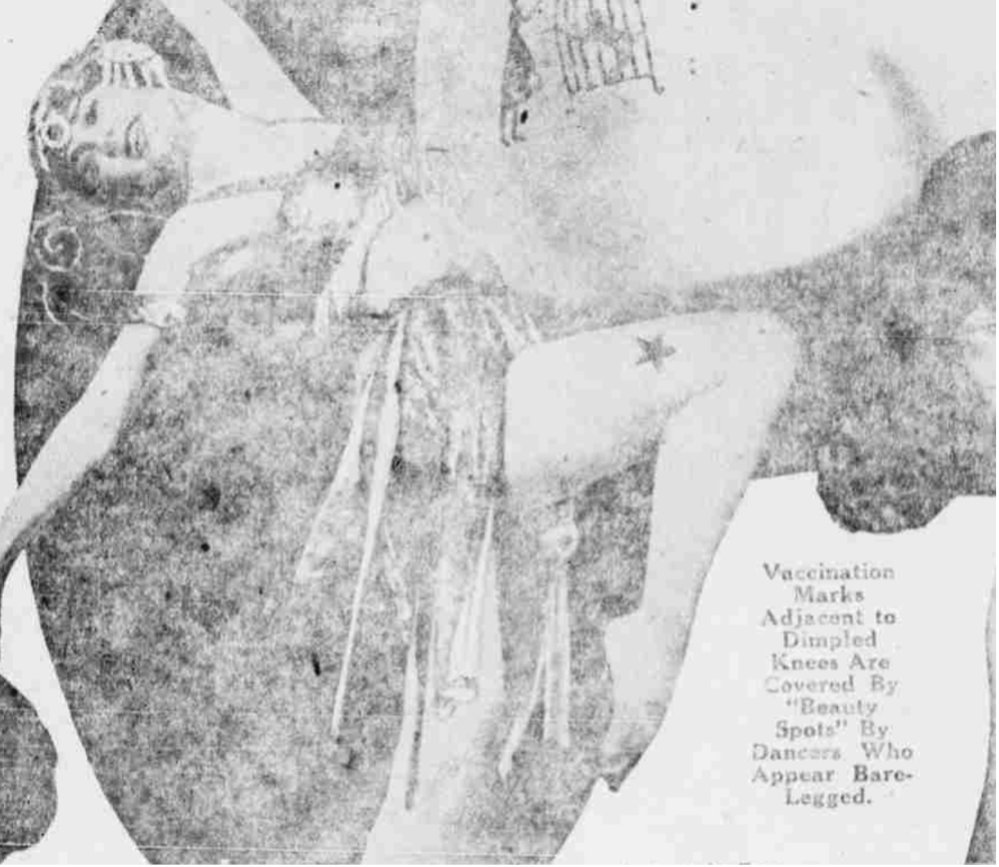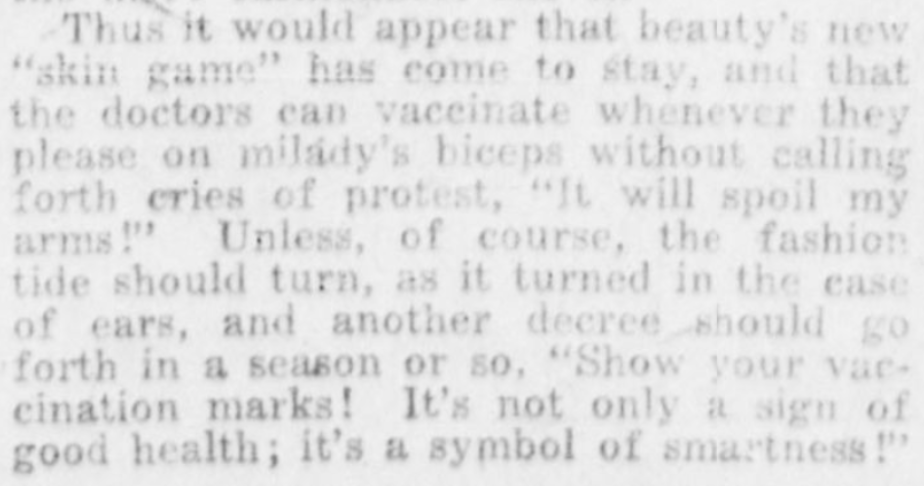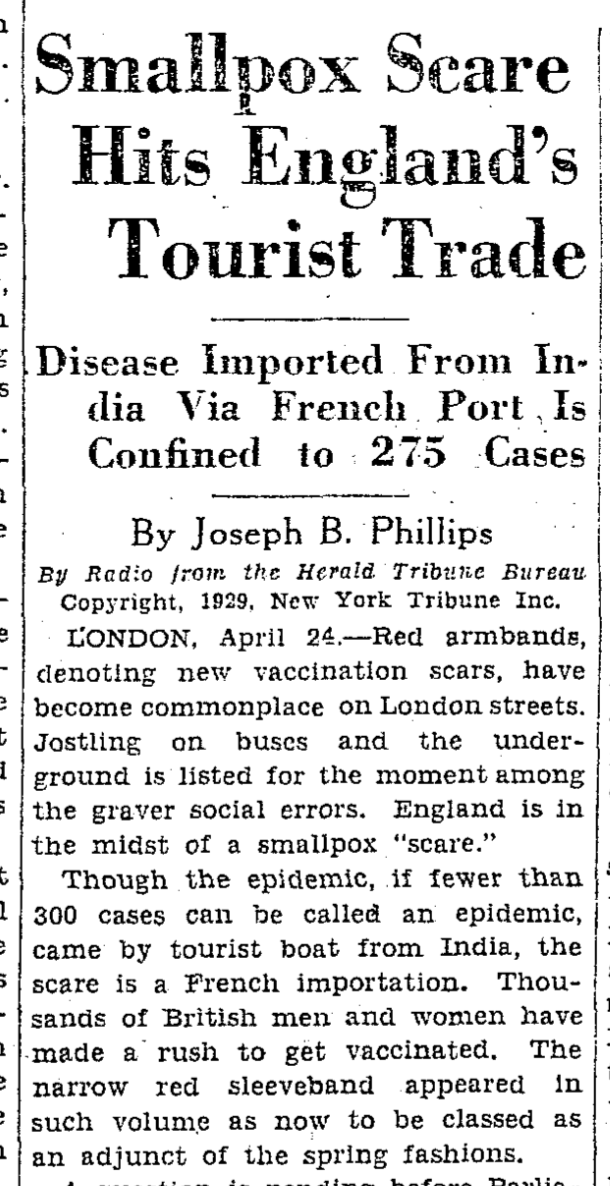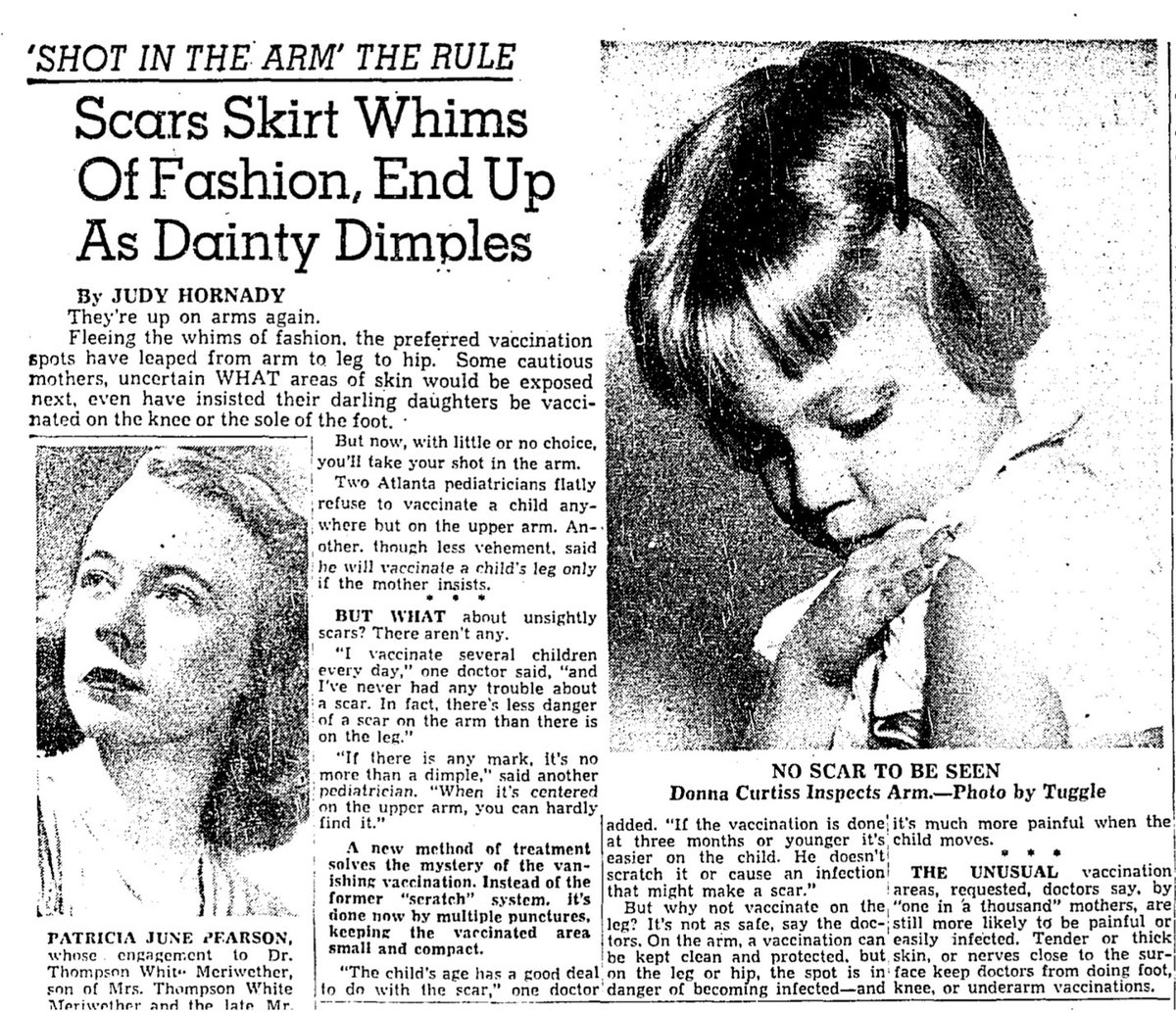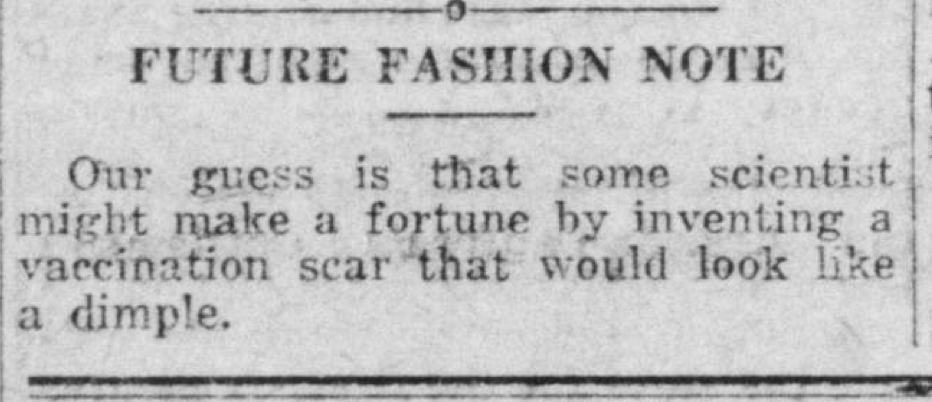I wanted to pick up on something I noticed researching this piece that didn’t make it into the essay...
Smallpox vaccination scars were at the center of women’s fashion and consumption habits in turn-of-the-20th-century America. https://twitter.com/PubliusorPerish/status/1379103695565164555">https://twitter.com/Publiusor...
Smallpox vaccination scars were at the center of women’s fashion and consumption habits in turn-of-the-20th-century America. https://twitter.com/PubliusorPerish/status/1379103695565164555">https://twitter.com/Publiusor...
Smallpox vaccination left an ugly scar where it was administered, usually on a person’s arm. Newspaper writers loved to chatter about how young women hated these scars and how they tried to avoid being vaccinated on the arm, or even avoid the vaccine entirely. (1890 paper)
This created a problem, though. Those vaccinated on the legs would sometimes have to demonstrate that they had been vaccinated, which meant baring part of one’s leg to a male physician, which was of course embarrassing. (1894 newspaper)
This embarrassment convinced some women not to get the vaccine on their legs. But, this 1894 article commented, “the advent of the woman physician” meant it wasn’t necessary for women to “make their arms unfit for short sleeves by an ugly scar.”
By the early twentieth century, though, women’s fashion evolved and some young women wore shorter, calf-length dresses that didn’t hide their scars. This was the so-called “flapper” style. These newspapers (both from 1925) joked about this.
But it was a real problem! Women were uncomfortable with these scars in short-sleeves. This woman signing off as “Dee” asked an advice columnist for a “remedy” for her vaccination scars.
In 1924, another newspaper joked that it was odd that nobody had created a fashion accessory to cover up a vaccination scar.
…but of course, consumer capitalism was already rising to the challenge. New fashions, baring one arm catered to the fact that most women had one scarred arm. Celebrities wore jewelry to cover up unsightly scars.
“If you have a little vaccination mark on your arm, then you really must have a little bracelet there, too, or a little fluff of ribbon…” This fascinating 1922 feature recommended covering their scars with serpentine bracelets, painted bracelets, and flowers.
Some professional dancers apparently wore “beauty spot” adhesives to hide their scars.
The same feature explained that “Many housewives welcome the fad not as a butterfly flourish, but because it solves what is often a real problem for them.” That’s probably true.
The same feature explained that “Many housewives welcome the fad not as a butterfly flourish, but because it solves what is often a real problem for them.” That’s probably true.
The writer predicted that perhaps in a few years, vaccination scars would become fashionable—as a sign of “good health” and “a symbol of smartness.”
Looking at these sources, it’s hard not to wonder how much new styles encouraged women to get vaccinated against smallpox. They must have made some of them more comfortable with the procedure. Did fashion changes boost vaccination rates?
Eventually, as vaccines modernized, they left behind less noticeable marks. This 1951 article noted a new trend toward vaccinations on the hip. But by that time, a doctor noted, the vaccine left behind not a scar, but “no more than a dimple.”

 Read on Twitter
Read on Twitter